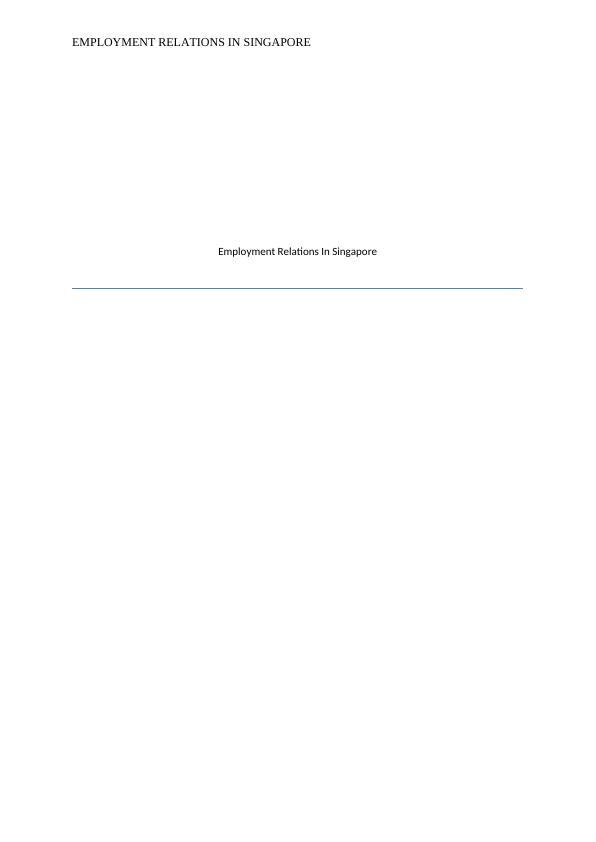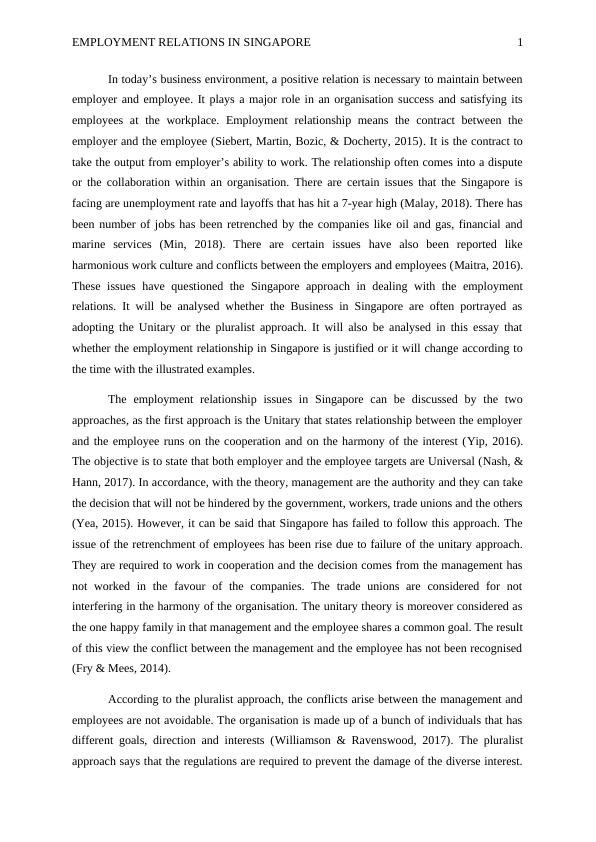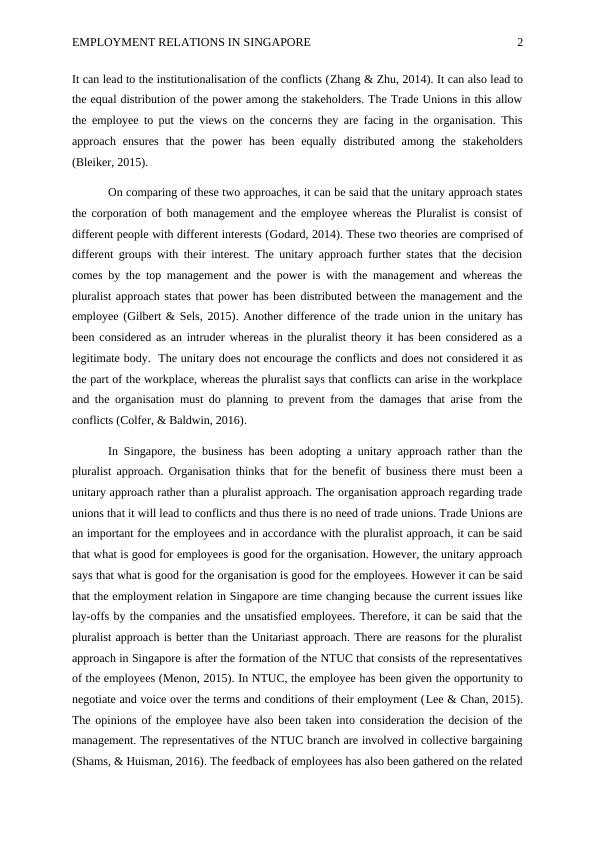Employment Relations in Singapore
Write an essay on a topical employment relations issue in Singapore, discussing whether businesses in Singapore adopt a 'unitarist' or 'pluralist' attitude to employment relations, with contemporary examples.
8 Pages2635 Words471 Views
Added on 2023-06-03
About This Document
This essay analyses the employment relations in Singapore and compares the unitary and pluralist approach. It also discusses the laws governing employment relations and the steps taken by the Singapore government to provide a harmonious work environment.
Employment Relations in Singapore
Write an essay on a topical employment relations issue in Singapore, discussing whether businesses in Singapore adopt a 'unitarist' or 'pluralist' attitude to employment relations, with contemporary examples.
Added on 2023-06-03
ShareRelated Documents
End of preview
Want to access all the pages? Upload your documents or become a member.
Employment Relations Assignment PDF
|9
|1868
|115
Employee Relations : Tesco
|18
|5707
|107
Contemporary Development in Employment Relations PDF
|14
|4004
|66
Employment Relations in Asia
|5
|1220
|336
Employee Relations Assignment | HRM Assignment
|15
|5126
|35
Employment Relations and Law
|10
|2938
|49



